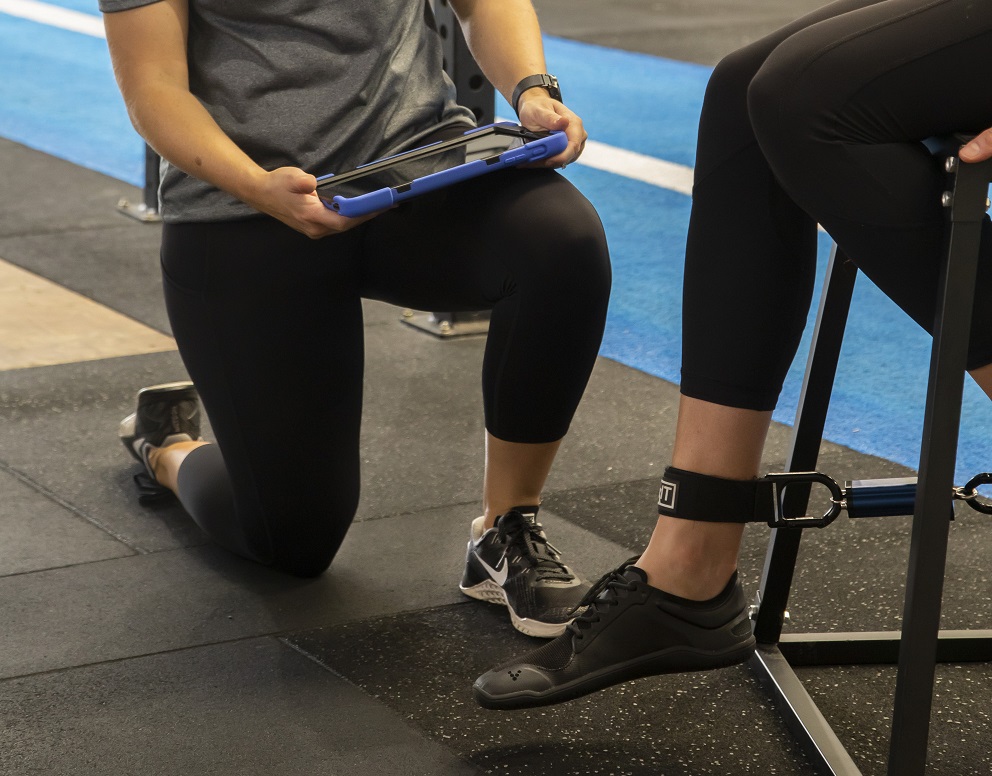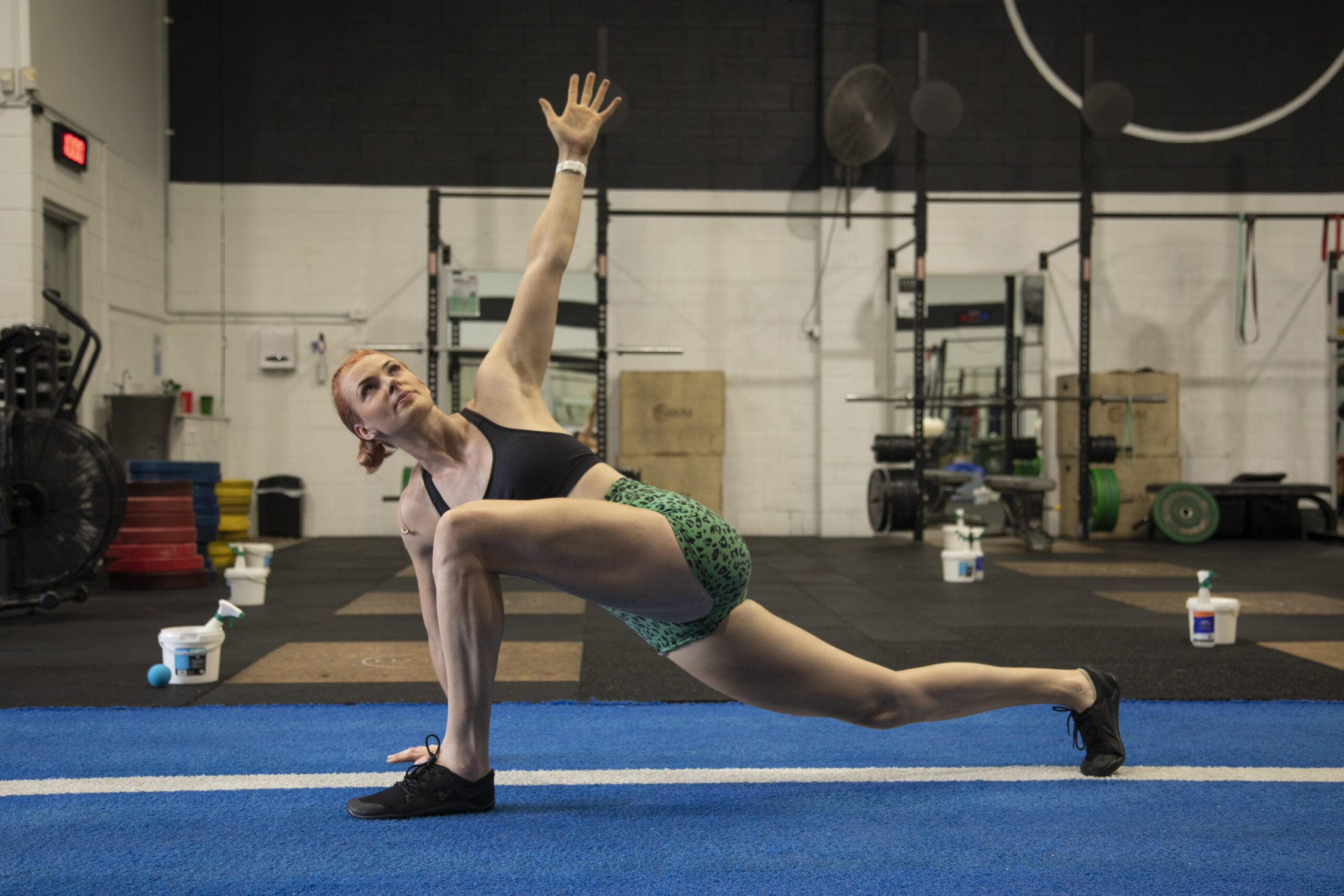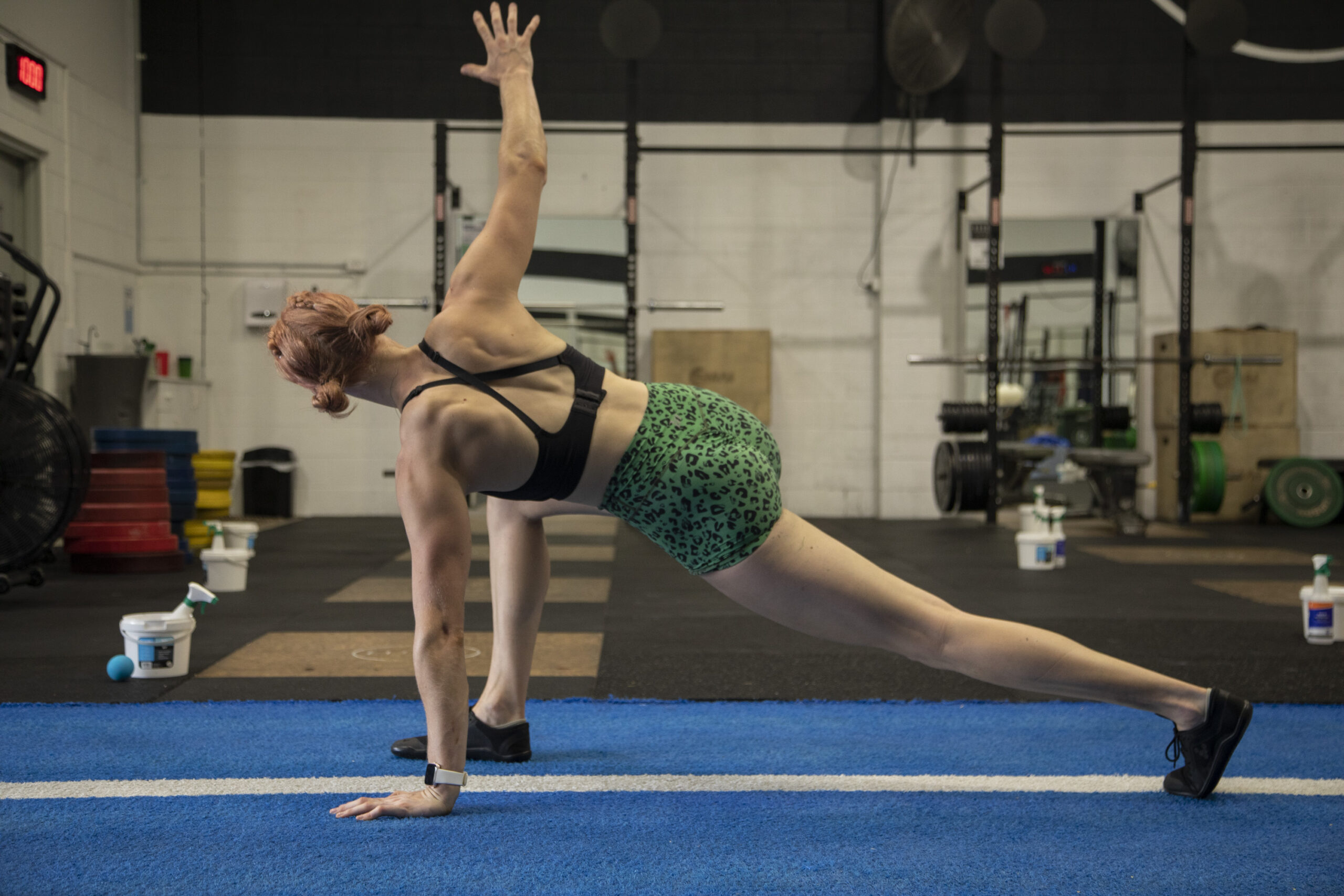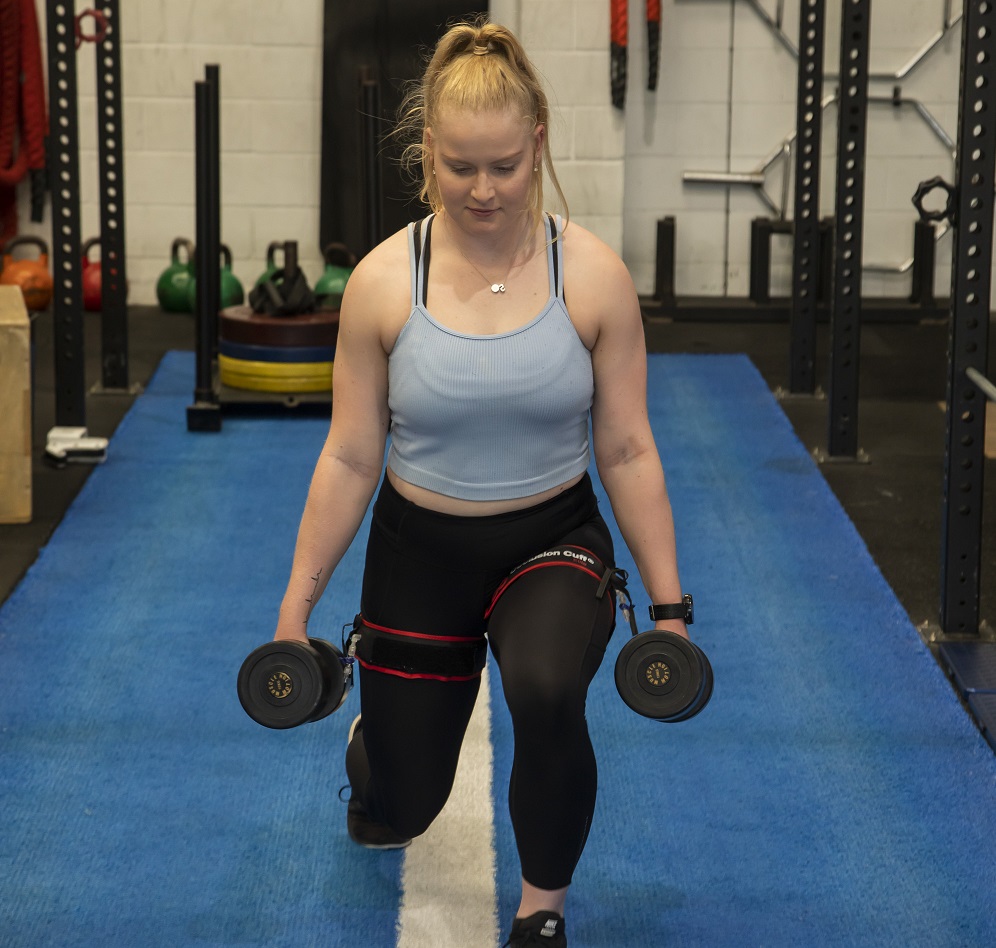Compound exercises, such as squats, lunges, and deadlifts, are fundamental exercises for building lower body strength and power. These exercises involve multiple muscle groups and joints, making them an effective way to maximize muscle activation and improve overall athletic performance. However, many people may not realize that ankle mobility plays a crucial role in performing compound exercises correctly and safely. In this article, we will explore the importance of ankle range of motion for compound exercises and provide scientific references to support these claims.

The Importance of Ankle Range of Motion in Compound Exercises
The ankle joint is responsible for connecting the lower leg bones to the foot bones, allowing for plantarflexion (pointing the foot downwards) and dorsiflexion (lifting the foot upwards). In compound exercises, the ankle joint helps maintain proper alignment and stability, allowing for optimal force transfer throughout the lower body. Adequate ankle range of motion enables the ankle to flex and extend properly, which is necessary for maintaining proper form and technique during exercises.
When the ankle lacks range of motion, it can lead to compensations that may result in injury or reduced exercise effectiveness. For example, limited ankle mobility may cause excessive forward lean during squats or lunges, which can place undue stress on the knees and lower back. Additionally, reduced ankle mobility may limit the depth of squats or lunges, reducing the effectiveness of the exercise.
A study published in the Journal of Strength and Conditioning Research found that athletes with limited ankle mobility were more likely to experience knee pain and decreased performance during activities that required jumping or landing.
Research has shown that limited ankle mobility is a common problem, especially in athletes and individuals who engage in activities that require jumping, running, or quick changes of direction. A study published in the Journal of Strength and Conditioning Research found that athletes with limited ankle mobility were more likely to experience knee pain and decreased performance during activities that required jumping or landing. Additionally, a study published in the Journal of Athletic Training found that individuals with limited ankle mobility were at a higher risk of ankle sprains and other lower body injuries.

How to Assess Ankle Mobility
If you’re unsure about your ankle mobility, it’s important to have it assessed by a qualified professional. An Exercise Physiologist, for example, can perform a thorough assessment of your ankle range of motion and identify any restrictions or limitations. They can also recommend specific ankle mobility exercises tailored to your individual needs and goals.
Assessing ankle mobility is crucial for identifying any limitations that may impact exercise performance and safety. Here are two common assessments for ankle mobility:
- The Ankle Wall Test – This test measures ankle dorsiflexion range of motion. Stand with your toes about 3-4 inches away from a wall, then place your foot flat on the ground and try to touch your knee to the wall. If your knee can touch the wall without your heel lifting off the ground, your ankle mobility is considered adequate. If your heel lifts off the ground, your ankle mobility may be limited.
- The Single-Leg Balance Test – This test measures ankle stability and proprioception. Stand on one foot with your eyes closed and try to maintain balance for 30 seconds. If you are able to maintain balance for the full 30 seconds without putting your other foot down, your ankle stability and proprioception are considered adequate. If you are unable to maintain balance, your ankle stability and proprioception may be limited.
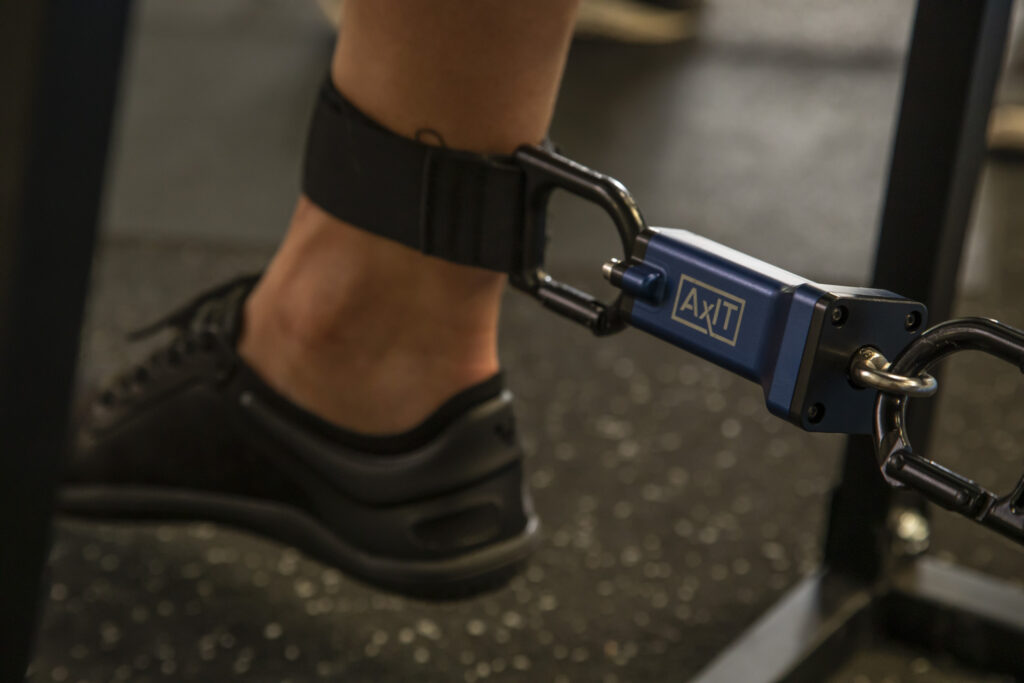
Exercises to Improve Ankle Mobility
There are several exercises you can do to improve your ankle mobility. However, it’s important to perform these exercises under the guidance of a qualified fitness professional, such as an exercise physiologist, to ensure proper form and progression.
An exercise physiologist can design a program that is tailored to your specific needs and goals, taking into account any pre-existing conditions or injuries. They can also help you progress your exercises over time to continually challenge your ankle mobility and ensure you’re making progress.
In addition, an exercise physiologist can help you identify any compensation patterns you may be using to compensate for limited ankle mobility. By addressing these compensation patterns and improving your ankle range of motion, you can reduce the risk of injury and maximise the benefits of compound exercises.

For example, some exercises that an Exercise Physiologist may use to improve ankle mobility and reduce the risk of injury are:
- Ankle Alphabet – Sit with your legs extended in front of you, then use your toes to trace the alphabet in the air. Complete the entire alphabet with one foot before switching to the other foot.
- Calf Raises – Stand with your feet hip-width apart and raise up onto the balls of your feet, then lower back down. Repeat for 2-3 sets of 10-12 reps.
- Ankle Circles – Stand with your feet hip-width apart and lift one foot off the ground. Slowly circle your foot clockwise for 10 seconds, then switch to counterclockwise for another 10 seconds. Repeat on the other foot.
- Knee-to-Wall Stretch – Stand with your feet hip-width apart and your toes about 3-4 inches away from a wall. Keeping your heel flat on the ground, lean forward to touch your knee to the wall. Hold for 10-15 seconds, then switch to the other foot.
- Resistance Band Ankle Mobilisation – Sit on the floor with your legs extended in front of you and a resistance band wrapped around the ball of your foot. Hold onto the ends of the band and gently pull your foot towards you, feeling a stretch in your ankle. Repeat for 2-3 sets of 10-12 reps.
It’s important to note that ankle mobility exercises should be done with caution and under the guidance of a qualified fitness professional. Overstretching or overloading the ankle joint can lead to injury, so it’s important to start with lighter resistance and progress slowly over time.
Conclusion
Ankle mobility is a critical component of performing compound exercises safely and effectively. Limited ankle range of motion can lead to compensations, injuries, and reduced exercise effectiveness. By regularly assessing ankle mobility and incorporating ankle mobility exercises into your workout routine, you can improve your ankle range of motion and reduce the risk of injury. Remember to start slowly, progress gradually, and seek the guidance of a qualified fitness professional if needed. By prioritising ankle mobility, you can maximise the benefits of compound exercises and achieve your fitness goals safely and effectively.
- Hewett, T. E., Ford, K. R., Hoogenboom, B. J., & Myer, G. D. (2010). Understanding and preventing ACL injuries: current biomechanical and epidemiologic considerations – update 2010. North American journal of sports physical therapy: NAJSPT, 5(4), 234–251.
- Kim, S. Y., Spritzer, C. E., Utturkar, G. M., Toth, A. P., Garrett, W. E., & DeFrate, L. E. (2015). Knee kinematics during non-contact anterior cruciate ligament injury as determined from bone bruise location. The American journal of sports medicine, 43(10), 2515–2521.
- Knapik, J. J., Bauman, C. L., Jones, B. H., Harris, J. M., & Vaughan, L. (1991). Preseason strength and flexibility imbalances associated with athletic injuries in female collegiate athletes. The American journal of sports medicine, 19(1), 76–81.
- Malliaropoulos, N., Bikos, G., Meke, M., Vasileios, K., & Korakakis, V. (2017). Kinematic differences between normal and anterior cruciate ligament deficient knee during jump landing. Journal of back and musculoskeletal rehabilitation, 30(6), 1293–1299.
- Riemann, B. L., & Lephart, S. M. (2002). The sensorimotor system, part I: the physiologic basis of functional joint stability. Journal of athletic training, 37(1), 71–79.
- Ross, M. D., & Langford, B. (1998). Whiplash associated disorders: a review of the literature and physiotherapy implications. The Australian journal of physiotherapy, 44(3), 173–183.
- Tyler, T. F., McHugh, M. P., Mirabella, M. R., Mullaney, M. J., & Nicholas, S. J. (2017). Risk factors for noncontact ankle sprains in high school football players: the role of previous ankle sprains and body mass index. The American journal of sports medicine, 45(2), 410–415.
- van der Horst, N., Smits, D.-W., Petersen, J., Goedhart, E. A., & Backx, F. J. G. (2015). The preventive effect of the nordic hamstring exercise on hamstring injuries in amateur soccer players: a randomized controlled trial. The American journal of sports medicine, 43(6), 1316–1323.
- Wilk, K. E., Voight, M. L., & Keirns, M. A. (1993). Preseason strength and flexibility imbalances associated with athletic injuries in female collegiate athletes. The American journal of sports medicine, 21(2), 286–291.
- Young, M. A., Cook, J. L., & Purdam, C. R. (2005). Eccentric decline squat protocol offers superior results at 12 months compared with traditional eccentric protocol for patellar tendinopathy in volleyball players. British journal of sports medicine, 39(2), 102–105.
